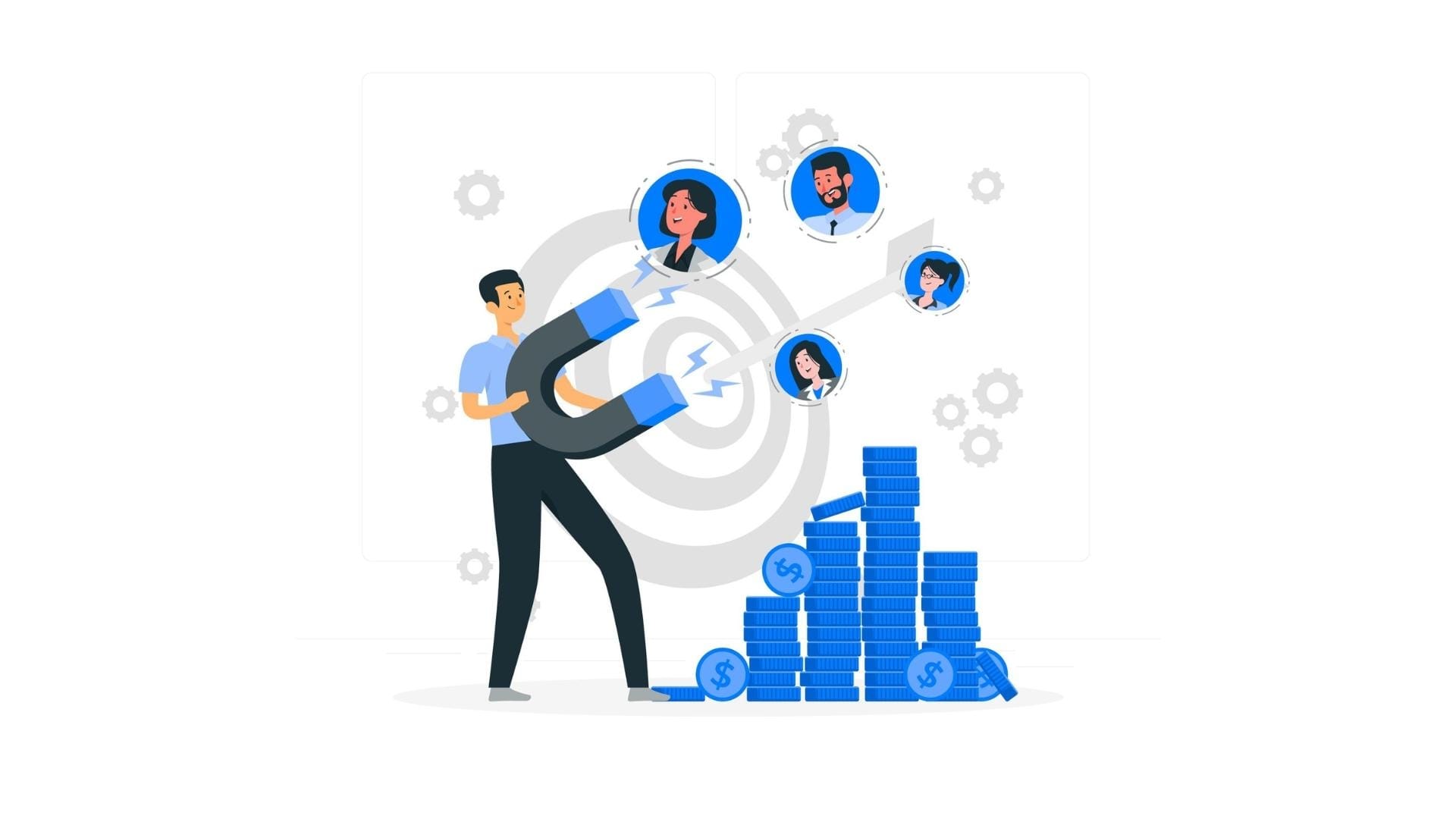What is Lead Intelligence? 6 Best Tools for Sales Teams
Transform sales with lead intelligence: Gain insights to personalize outreach, prioritize prospects, and boost retention. Click to enhance strategy!

Sales isn't just about hitting numbers; it's about building connections, understanding prospects, and addressing their unique challenges. But without context, even the best pitch can fall flat. That's where lead intelligence steps in, revolutionizing how businesses approach potential customers by utilizing a lead intelligence tool to enhance sales strategies and improve lead quality.
In this guide, we'll explore how lead intelligence can revolutionize your sales approach, making it more targeted, efficient, and effective.
What is Lead Intelligence?
Lead intelligence involves gathering and analyzing detailed lead intelligence data about potential customers to gain insights that enhance sales and marketing strategies. Unlike traditional lead generation, which focuses on collecting basic contact details, lead intelligence digs deeper into a prospect's:
- Behavioral Patterns: How they interact with your website, emails, and social media.
- Demographics: Age, location, industry, and job role.
- Engagement Metrics: Their level of interest, based on clicks, downloads, or inquiries.
Now that we’ve established the basics, let’s explore why lead intelligence is a critical component for modern sales and marketing strategies and how it can drive better results.
Why is Lead Intelligence Important?
Lead intelligence is a critical component in modern sales and marketing strategies.
Source: Link
Here are the key reasons why lead intelligence is essential:
- Improve Sales and Revenue: Understanding a lead’s specific pain points and goals, especially those of key decision-makers, allows you to pitch directly relevant solutions. This targeted approach boosts conversion rates and revenue.
- Complete Picture of Lead Quality: Not all leads are created equal. Lead intelligence provides a 360-degree view of each prospect, helping you prioritize high-quality leads most likely to convert.
- Increase Productivity: By focusing only on high-potential leads, sales teams can maximize their productivity. No more wasting time on prospects who aren’t ready or a good fit.
- Save Time & Effort: Streamlining the lead qualification process means sales reps spend more time closing deals and less time researching or chasing unqualified prospects.
- Enhance Customer Satisfaction: When customer success teams approach a lead with a deep understanding of their needs, you’re not just selling—you’re solving problems. This makes trust and lays the foundation for long-term customer relationships.
With the power of lead intelligence in mind, it's crucial to have the right tools to effectively harness its potential. Let’s take a closer look at some of the best lead intelligence software available
The Best Lead Intelligence Softwares in 2025
Businesses need reliable tools to harness the power of lead intelligence fully. Here are some top solutions:
1) Alisha
Alisha is an AI-powered Sales Development Representative (SDR) developed by Floworks.ai. It automates various aspects of the outbound sales process, from lead research to personalized outreach, aiming to boost efficiency and conversion rates.
Key Features:
- Automated Lead Research: Utilizes AI to generate a surge of B2B contacts by browsing a database of over 275 million contacts.
- Hyper-Personalized Outreach: Crafts tailored messages based on lead profiles and behaviors, enhancing engagement.
- Intelligent Follow-Ups: Delivers instant, 24/7 follow-ups, responding to leads within one minute, regardless of time zone. Automates follow-up sequences based on prospect activity.
- Comprehensive Sales Automation: Manages the entire outbound sales workflow, including lead research, sequencing, objection handling, and follow-ups.
2) Cognism
Cognism is a sales intelligence platform that provides global B2B data, including contact information and intent signals, to help businesses identify and connect with high-quality leads.
Key Features:
- Global B2B Data Access: Offers a comprehensive database of business contacts and companies worldwide, facilitating targeted lead generation.
- Intent Data Integration: Integrates with Bombora to track buyer intent signals, allowing users to identify prospects actively searching for relevant solutions.
- Lead Enrichment: Enhances lead profiles with additional information such as job titles, company details, and social profiles, providing a 360-degree view of prospects.
3) ZoomInfo
ZoomInfo is a sales intelligence platform offering extensive data on businesses and professionals, along with tools to enhance prospecting and lead generation efforts.
Key Features:
- Extensive Database: Provides detailed profiles on over 100 million businesses and professionals globally, supporting comprehensive lead searches.
- Advanced Search Capabilities: Features sophisticated search filters to refine lead searches based on criteria like industry, job function, and company size.
- Intent Data Services: Identifies prospects showing active interest in specific topics through intent signals, aiding in prioritizing leads.
4) Site-Insights
Site-Insights is a lead intelligence tool that focuses on tracking and analyzing website visitor behavior to identify and qualify potential leads.
Key Features:
- Visitor Behavior Tracking: Monitors how visitors interact with your website, providing insights into their interests and engagement levels.
- Reverse IP Lookup: Identifies the companies visiting your site through reverse IP lookup, offering valuable company-level insights.
- Lead Scoring and Segmentation: Scores and segments leads based on their interactions, helping prioritize follow-ups with high-potential prospects.
5) Bombora
Bombora is a B2B intent data provider that analyzes online business behavior to help companies identify prospects actively researching their products or services.
Key Features:
- Intent Data Collection and Analysis: Aggregates and analyzes data from numerous B2B websites to identify businesses showing interest in specific topics.
- Real-Time Intent Signals: Provides up-to-date insights into which companies are actively researching your solutions, enabling timely engagement.
- Customizable Intent Segments: Enables users to create tailored intent data segments based on specific criteria, enhancing targeting precision.
Each of these tools offers unique features aimed at enhancing lead intelligence, helping businesses identify, engage, and convert high-quality leads more effectively.
Now that we've explored the tools, let's dive into practical ways you can use lead intelligence to ensure your leads are high-quality and conversion-ready.
Maximizing the Potential of Lead Intelligence
Lead intelligence, when used effectively, can significantly improve lead generation, nurturing, and conversion efforts. Here are some practical ways to make the most of lead intelligence:
- Targeted Lead Generation: Use lead intelligence to identify your ideal audience and focus on the platforms and channels they frequent. This ensures your campaigns are more relevant and impactful, leading to higher engagement and better results.
- Smarter Lead Scoring: By analyzing behavioral and demographic data, you can prioritize leads based on their readiness to buy. Advanced tools, like AI-powered tools like Alisha, can further refine this process by identifying patterns that predict conversion likelihood.
- Personalized Nurturing: Tailor your communication with leads based on their preferences and actions. For instance, use automated email workflows triggered by specific behaviors or create custom content that resonates with their interests.
- Enhanced Customer Experience: Understanding how leads interact with your brand allows you to create a seamless customer journey. This not only improves satisfaction but also increases the likelihood of conversion.
- Focus on High-Quality Leads: Lead intelligence helps identify prospects who show strong buying intent or exhibit behaviors that signal interest. This enables your sales team to prioritize high-value opportunities.
By using lead intelligence, businesses can enhance lead qualification, personalize outreach, driving higher engagement and conversions.
Conclusion
Lead intelligence is essential for businesses that want to enhance their sales and marketing efforts. By leveraging powerful tools that provide detailed insights into prospects' behaviors, interests, and engagement, businesses can qualify, nurture, and convert leads more effectively.
With the right lead intelligence tools in place, such as Alisha by Floworks, companies can target high-value prospects, personalize their outreach, and close deals faster, all while improving productivity and efficiency.
FAQs
what is a sales funnel strategy?
A sales funnel strategy outlines the stages prospects go through, from awareness to purchase. It helps businesses guide leads through each phase with targeted actions.
Typical stages include awareness, interest, decision, and action. The goal is to maximize conversions at every step.
What is the best source of new leads for good salespeople?
The best sources of new leads include referrals, professional networking, and inbound marketing strategies like content and SEO.
Social media platforms like LinkedIn are priceless for B2B lead generation. High-quality lead databases or tools like ZoomInfo are also effective. Combining multiple sources ensures a steady lead flow.
What is sales lead generation and prospecting?
Sales lead generation involves identifying potential buyers through methods like ads, social media, or email campaigns.
Prospecting takes it further by researching and qualifying leads to find those most likely to convert. Together, these steps fill the pipeline with quality opportunities. Effective prospecting ensures time and effort are spent wisely.
How is Business Intelligence used in sales?
Business Intelligence (BI) in sales analyzes data to uncover insights about customer behavior, trends, and performance metrics. It helps sales teams target the right prospects, personalize pitches, and improve decision-making.
BI tools provide dashboards and analytics to track progress and refine strategies for better results.


